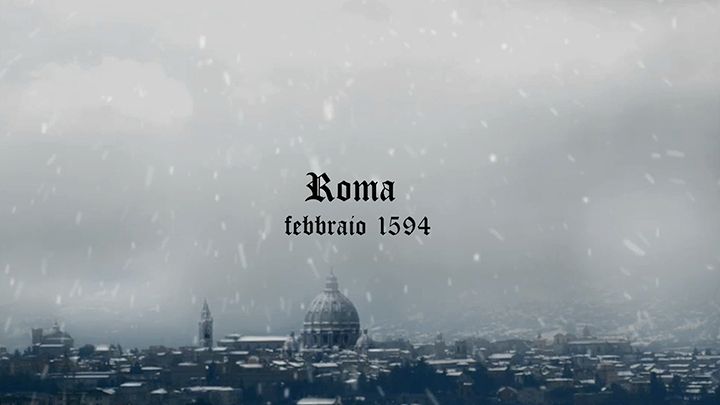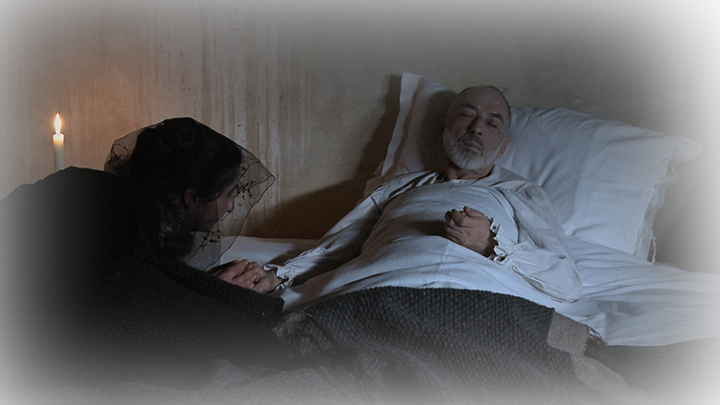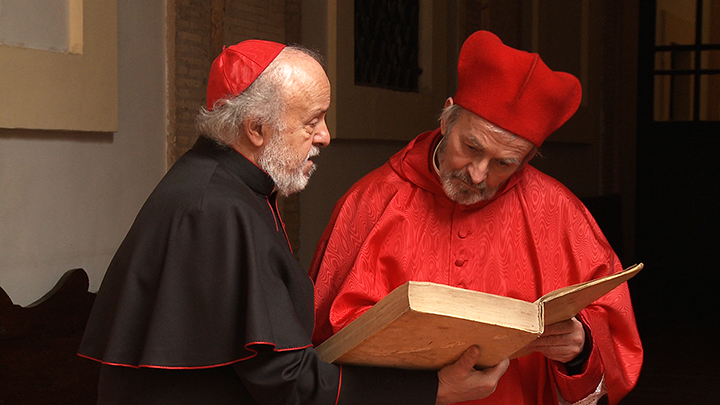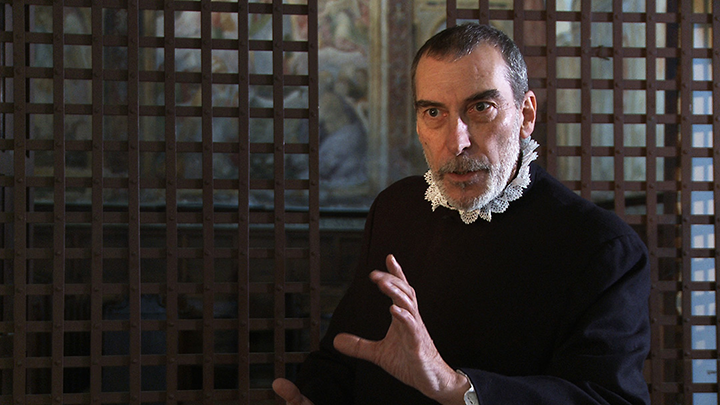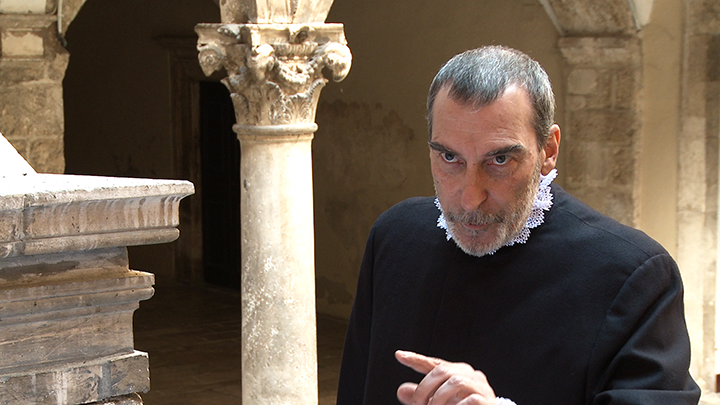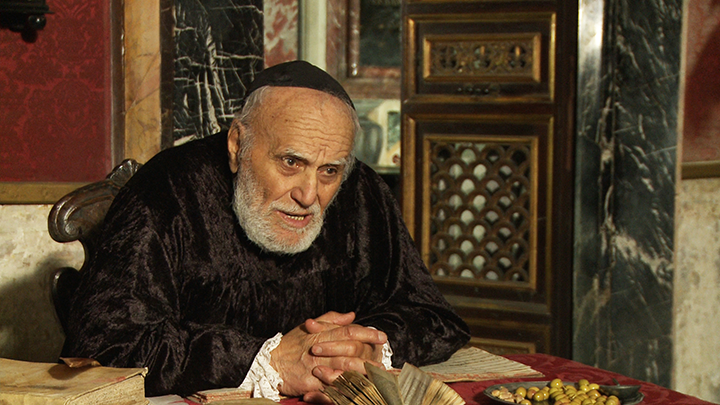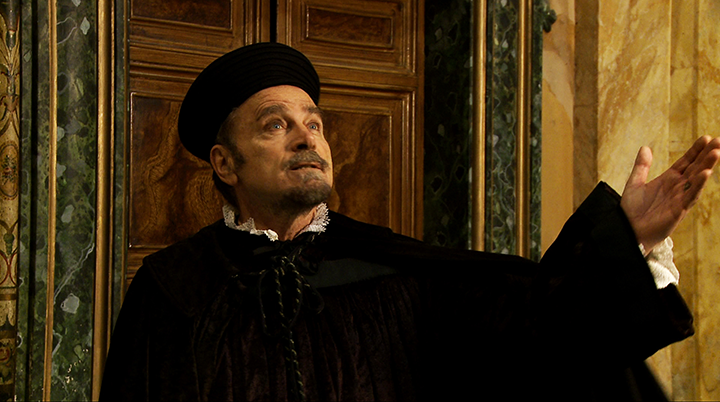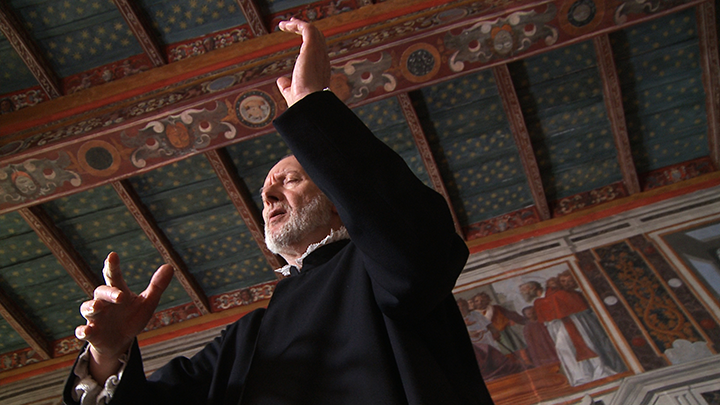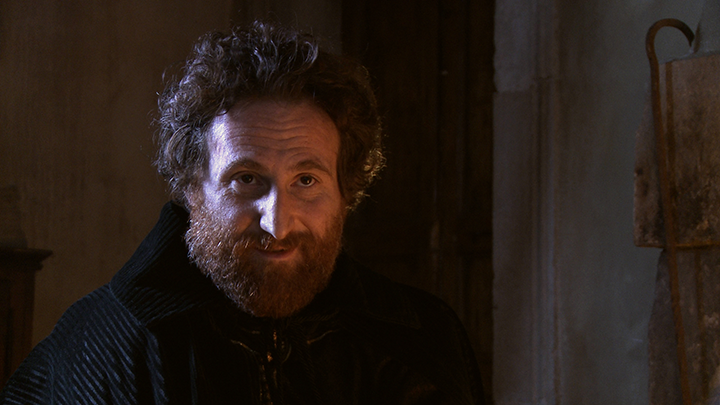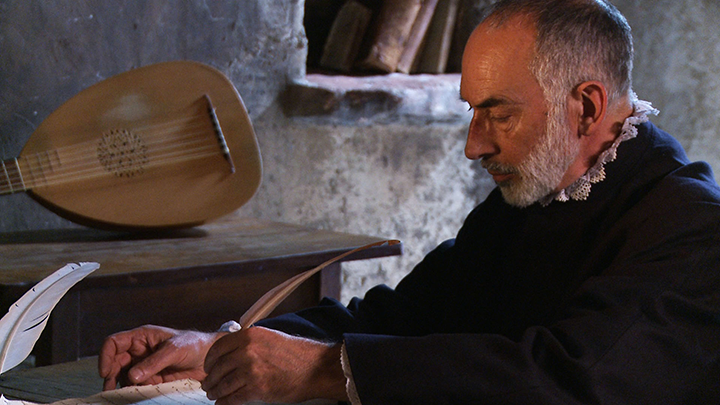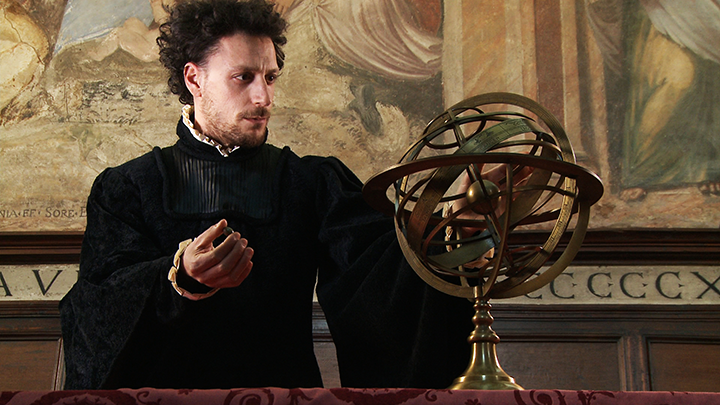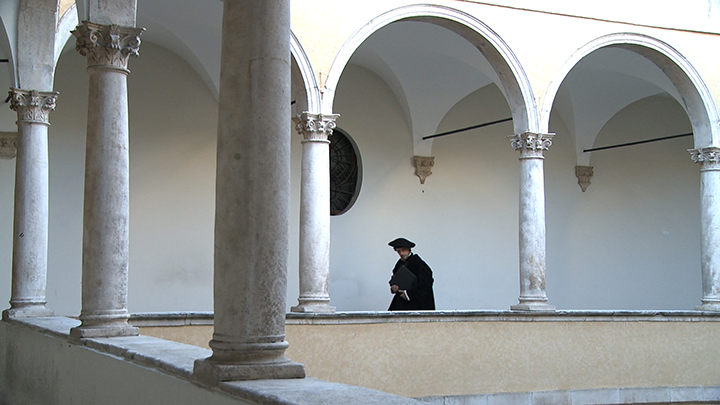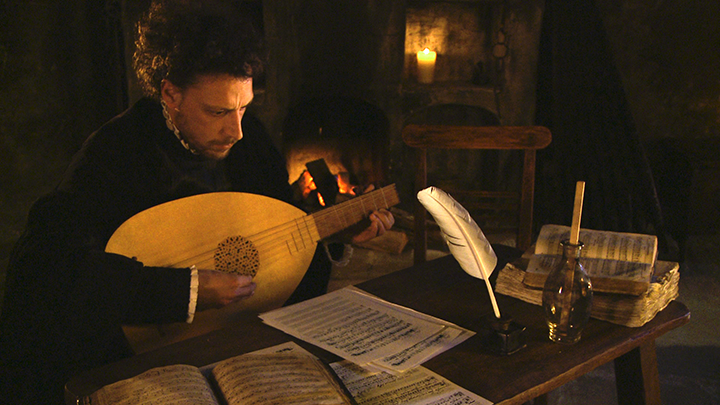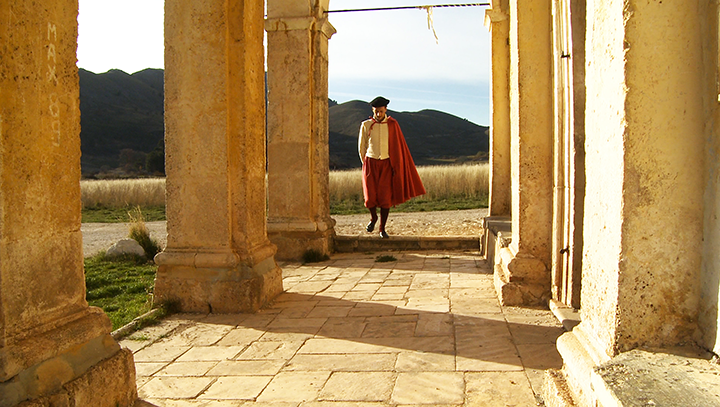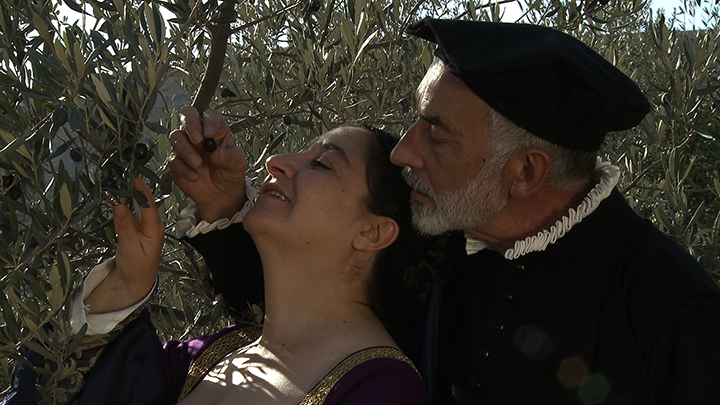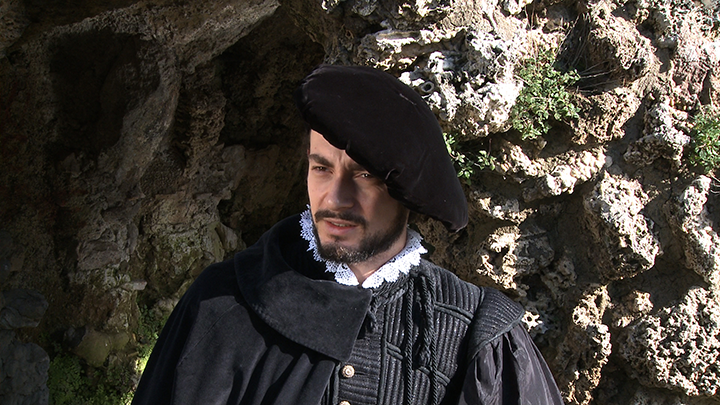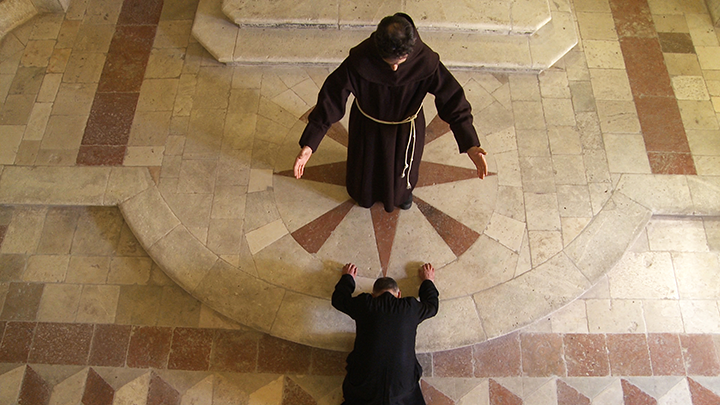
Palestrina
PALESTRINA - PRINCE OF MUSIC
or: The Liberation of Music
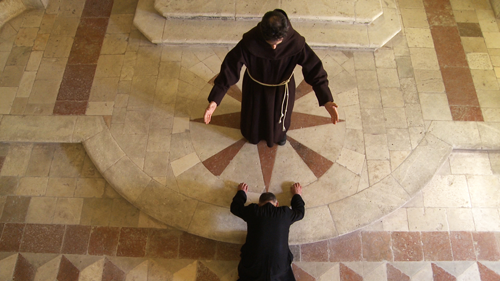 To achieve artistic and economic independence, the most important European polyphonic composer, Giovanni Pierluigi da Palestrina (ca.1525-1594), worked with great diplomacy in the shadow of the powerful Roman Catholic Church. Despite strict ecclesiastical rules, he succeeded in modernizing music.
To achieve artistic and economic independence, the most important European polyphonic composer, Giovanni Pierluigi da Palestrina (ca.1525-1594), worked with great diplomacy in the shadow of the powerful Roman Catholic Church. Despite strict ecclesiastical rules, he succeeded in modernizing music.
During the time when Protestant Northern Europe separated from the Catholic Church of Rome and when Rome was no longer the center of power, the young Giovanni Pietro Aloysi, later called Giovanni Pierluigi da Palestrina, was trained as a choir-boy in the circle of the "Roman School" of polyphony founded by Costanzo Festa. Already in the middle of the 16th century, the talented musician - at only 25 - had become the head of the Cappella Giulia (Julian Chapel) at St. Peters. He was both artistically and economically dependent on the clergy and subject to the moods and whims of the all powerful Popes.
After Pope Giulio III nominated him cantore ponteficio for life, the highest position in Rome for a musician at that time, Palestrina felt that he, at the age of thirty, was at the height of his career. However, the envy of the next Pope, Paul IV, and that of his singer-collegues led to him losing the title and he was dismissed. He was deeply shocked and realized that the greedy Roman clergy were more interested in secular politics than in the spirituality of music.
This realization haunted the musician and caused his artistic counterreaction. Within a few years he developed a new style in polyphonic art, the genus novus. A balance between word and sound, in which all voices are predominent. Music became freer than ever. In this style he composed the famous Missa Papae Marcelli, which, after the Council of Trent, became the model for sacred music. This composition corresponds to the ecclesiastic musical challenges for verbal comprehension.
Suddenly Palestrina was back on top. The Jesuits, eager to win back Protestant Northern Europe for the Roman Catholic Church, became very attentive to Palestrina's music and summoned him to be the first music teacher at the Collegium Germanicum in Rome. These "Spanish Priests", as they were called, knew that music can reach people much deeper than words, directly to their souls, and that music can bring people back to the "true faith". They were very successful in this endeavour. Princes, Kings and even the Emperor wanted Palestrina as the choir-master of their courts. However, experience had taught him not to become a pawn in the hands of the powerful.
Like all the other great Renaissance artists, Palestrina wanted to take his destiny into his own hands and maintain his artistic independence. He demanded enormous salaries for these positions, since he intended on staying in Rome. In fact, he soon became the head of the Cappella Giulia. And he was the first and only musician to receive the title of composer of the Cappella Pontificia "modulator pontificus". Palestrina became the most important musician in the country.
At the peak of his career, he received a heavy stroke of fate. The plague and an influenza epidemic took away his two oldest sons and his wife. He was desperate and fell into a deep depression. He wanted to give up composing and become a member of the clergy. Again, however, he took fate into his own hands. Strenuousness, ambition and the desire for secularity pursuaded him to take another very pragmatic decision. He married the rich widow of a fur merchant and finally had enough money to publish his scores. At least this meant that his work would never be forgotten. Within a few years sixteen books were published with numerous compositions, Palestrina's legacy, his "musical descendants", which still fascinate us today.
WATCH THE FILM IN STREAMING ON VIMEO
ITALY, 52', HD, colour
Production: Brintrup Filmproduktion/ LICHTSPIEL ENTERTAINMENT / ZDF / ARTE







